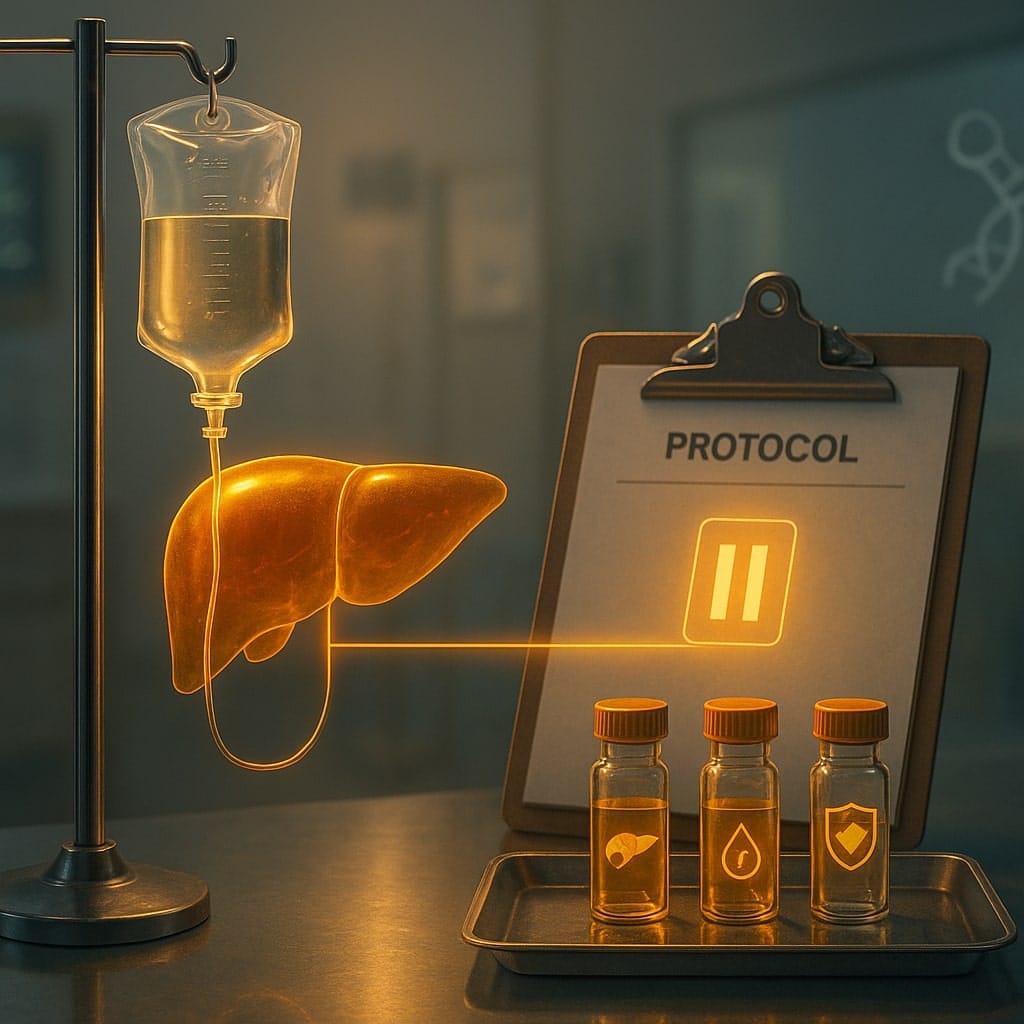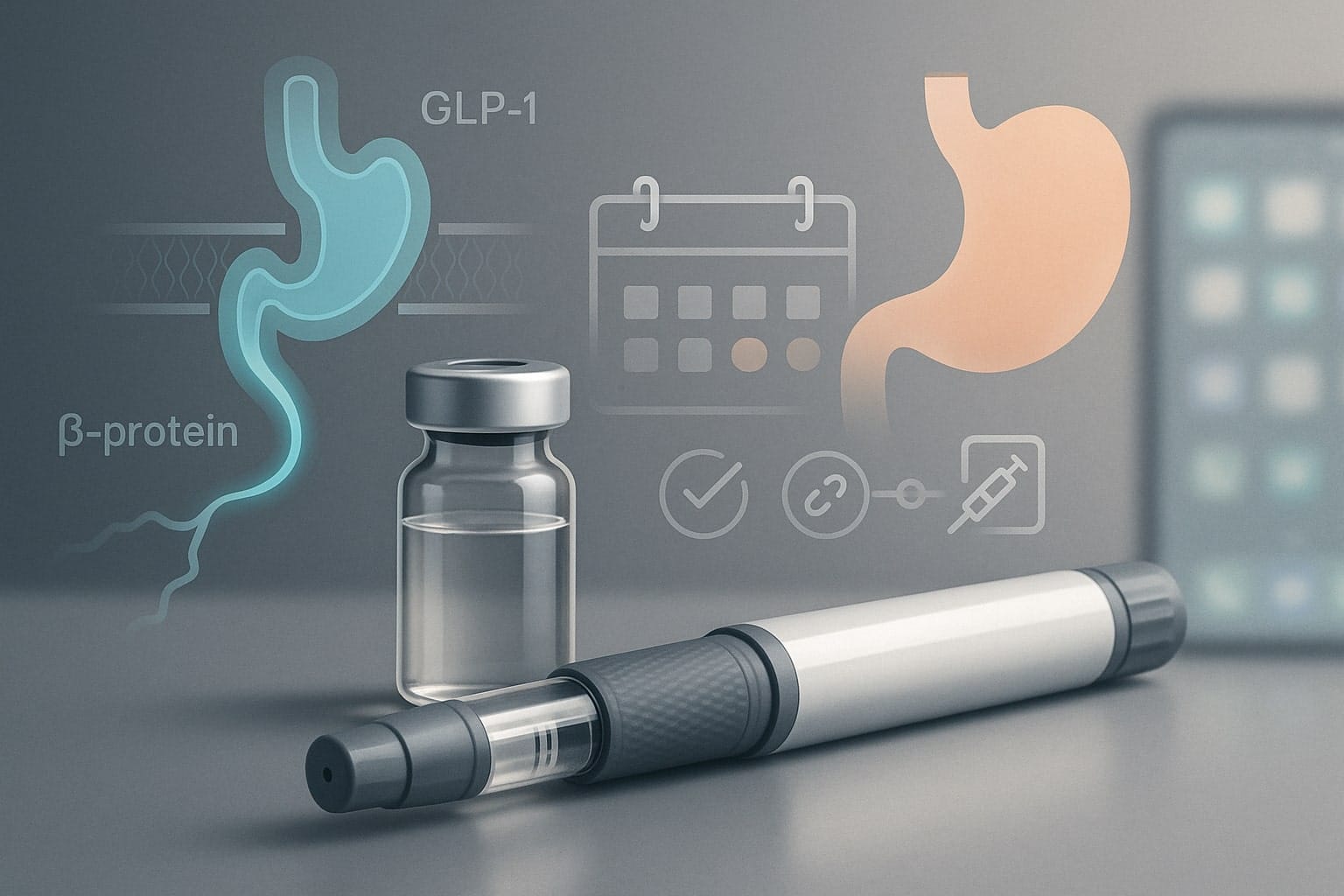Europe’s biotech ecosystem just notched a headline-grabbing win. Azafaros, a Netherlands-based rare-disease upstart, secured an oversubscribed €132 million Series B funding to propel its lead neurology drug into parallel phase 3 trials. The sheer size of this raise – roughly $147 million – is turning heads on both sides of the Atlantic. It’s not just a big number for Europe; it’s a statement. After years trailing U.S. biotech in scale and speed, Europe may be quietly repositioning itself as a hub for neurological and rare disease innovation. Is the continent, long seen as a junior partner in biotech, poised to become the new “neurology capital” of the world? A closer look at funding trends, investor appetites, and the evolving transatlantic landscape suggests the winds are indeed shifting.

Table of Contents
ToggleA Record Raise with Global Significance
Azafaros’ Series B isn’t just another European financing news blip – it’s one of the largest private biotech rounds Europe has seen in recent memory. The investment, led by European life sciences funds (France’s Jeito Capital and the Netherlands’ Forbion Growth) with participation from local backers, will bankroll late-stage trials for nizubaglustat, a first-of-its-kind, brain-penetrant therapy targeting rare lysosomal storage disorders like GM1 gangliosidosis and Niemann-Pick type C. For context, Azafaros’ prior Series A was a modest €25 million in 2020 – meaning the company leapt from seedling to near-unicorn-level funding in one jump. Such a mega-round is commonplace in Boston or San Francisco, but in Europe it signals a new confidence in scaling biotech ventures. This confidence is underpinned by notable achievements: Azafaros’ drug emerged from Dutch university labs and earned both U.S. FDA and European EMA orphan drug designations before even entering phase 3. In other words, European science and regulatory support helped de-risk the project to the point that big money followed.
Crucially, Azafaros is not an isolated case. Noema Pharma, a Swiss neuroscience startup, recently closed its Series B at CHF 130 million (~$147 million) to advance four phase 2 trials for rare central nervous system disorders. Meanwhile, Geneva-based Asceneuron raised $100 million in 2024 to tackle Alzheimer’s disease via a novel tau-targeting drug. These hefty rounds, all in the neurology or rare-disease arena, would have been almost unheard of in Europe a few years ago. Each reflects growing investor willingness to bet big on European neuro innovators. It’s telling that Noema’s syndicate combined pan-European VCs (Forbion, Sofinnova, Gilde, Jeito) with U.S. investors like Polaris Partners and UPMC Enterprises – a sign that global capital is converging on Europe’s brain-health startups. Azafaros, notably, managed to attract a huge round led entirely by European funds, suggesting local VC capacity has reached a new level.
How does €132 million stack up globally? In the U.S., biotech financing rounds have trended larger in recent years – the median private biotech round in early 2025 was about $93 million – yet Azafaros’ raise exceeds even that robust median, indicating Europe can now produce rounds on par with the U.S. elite. Historically, European biotechs raised only about 20% of the capital their U.S. counterparts did, but this gap is quietly narrowing. As recently as 2023, nearly $23 billion in venture capital poured into biopharma globally (mostly U.S.), while Europe’s contribution was smaller. Now in 2024-2025, Europe is chipping in ever larger deals. In 2024, European biotech startups secured roughly €2.4 billion by early Q4 and were on track to match the prior years’ deal volumes. The late-stage piece of that pie had been Europe’s weakness – megarounds largely vanished after 2021 – but Azafaros and peers indicate a resurgence. Europe is learning to scale its winners rather than ceding them early.
Trends in European Biotech: Neurology and Rare Diseases Take Center Stage
Beyond the headline numbers, the strategic focus of Europe’s biotech boom is noteworthy. Neurological disorders – long deemed high-risk, high-reward territory – are now a magnet for European funding. Neurology and rare diseases often overlap (think of conditions like rare epilepsies or lysosomal disorders that affect the nervous system), and European teams are carving out a niche here. In 2024, pharma analysts noted a renewed global focus on neurology after years of setbacks, pointing to record deal activity in the space. Europe is contributing its share: Asceneuron’s $100 million war chest to pursue a tau-based Alzheimer’s drug is a prime example of European innovation aligning with one of medicine’s toughest challenges. And Europe’s rare disease specialists have been active as well – for instance, Noema Pharma is targeting niche CNS conditions with multiple trials, exemplifying Europe’s penchant for tackling unmet needs in smaller patient populations.
To understand why Europe excels in rare and neuro niches, consider the continent’s strengths. Europe boasts 42% of the world’s top 100 life sciences universities, indicating a deep well of neuroscience and genetic research talent. Many of the breakthroughs in understanding neurodegenerative disease mechanisms (from amyloid and tau in Alzheimer’s to gene therapies for neurometabolic disorders) trace back to European labs and clinics. These strong academic networks feed a steady stream of startup ideas. Moreover, Europe’s healthcare system structure can be advantageous for rare diseases: with centralized patient registries and national health systems, identifying and enrolling rare disease patients for trials can be more efficient across Europe’s unified research networks than in the fragmented U.S. system. Indeed, European consortia and reference networks for rare diseases have helped companies like Azafaros plan global trials spanning the EU, U.S., and Latin America with relative ease.
There’s also a cultural factor. European biotech has historically been more cautious and research-driven, which aligns well with neurology – a field requiring patience and deep scientific grounding. While U.S. investors often shied away from neurology after high-profile Alzheimer’s failures, Europe’s public and private sectors quietly kept supporting neurological research through grants and seed funding. Now that the tide is turning (with new Alzheimer’s drugs showing promise and neurology startups delivering compelling data), Europe is positioned to capitalize on decades of groundwork. The narrative has flipped from “neurology is too risky” to “neurology might be the next big thing”, and Europe’s bet on the underdogs is starting to pay dividends.
Importantly, recent regulatory wins in neurology have not bypassed Europe. In late 2024, the FDA approved new drugs like donanemab (for early Alzheimer’s) and arimoclomol (for NPC disease). European regulators are moving in parallel: the European Medicines Agency is reviewing similar neurology therapies, and in cases like arimoclomol for Niemann-Pick, Europe is expected to follow the FDA’s lead soon. Such developments buoy investor confidence globally – if one major agency validates a new mechanism, the chance of success in Europe rises. Thus, every neurology breakthrough anywhere bolsters the sector everywhere. European startups in neurology now find a more receptive audience for funding, since the path to market looks more tangible than it did just a few years ago.
Capital Efficiency: Doing More with Less (The European Way)
Even as European biotechs start to raise larger rounds, they often remain paragons of capital efficiency. In plain terms, European startups have learned to stretch a euro further than an American company might stretch a dollar. There are structural reasons for this. Analyses show that in Europe, pre-money valuations for comparable biotechs tend to be about 30% lower than in the U.S., and operational costs run roughly 40% lower. Leaner salaries for scientists and executives, less extravagant lab spending, and access to non-dilutive funding (like EU grants and national R&D tax credits) mean European ventures can hit milestones on a tighter budget. For instance, Azafaros reached phase 2 proof-of-concept in two indications with only €25 million Series A funding plus academic support – a remarkably frugal run-up to phase 3. By contrast, an equivalent U.S. biotech might have burned through several times that amount by the same stage. This capital thrift doesn’t imply any lack of quality; rather, it reflects a different operating model. European teams often partner with academic hospitals (lowering trial costs), leverage government-funded infrastructure, and maintain smaller headcounts until absolutely necessary.
Capital efficiency has two big implications. First, investor capital can go a longer way in Europe, potentially yielding higher returns if and when an exit occurs. (It’s no coincidence that the average biotech M&A deal in Europe was valued lower than in the U.S., yet delivered solid returns because the upfront investment was lower.) Second, European startups can afford to tackle indications that aren’t immediate blockbusters. A rare pediatric neurological disease, affecting maybe a few thousand patients worldwide, can be a viable target for a lean European biotech that doesn’t need a billion-dollar market to satisfy its backers. This plays into Europe’s rare-disease strength: capital efficiency enables pursuing ultra-orphan neurology niches that big pharma or big VC might ignore as not lucrative enough. Azafaros’ lysosomal disorder program, for example, zeroes in on conditions so rare that no traditional large pharmaceutical would invest in them early on. But a focused European team, supported by specialist funds and public grants, can advance such a program through pivotal trials – and in doing so, create tremendous value when a larger player eventually recognizes the asset’s worth for a small but critical patient population.
That said, Europe’s frugality can be a double-edged sword. Some critics argue that European biotechs historically under-raise, moving too slowly and risking being scooped by better-funded rivals abroad. There is some truth here: Europe “lost” a number of promising biotechs to U.S. relocation or acquisition in the past, partly due to funding constraints. But the new wave of €100M+ rounds shows a shift. Europe is learning when to open the taps and double down on winners. The Azafaros round – oversubscribed and upsized – indicates that when the science is compelling and the time is right, European VCs will write big checks rather than insist on doing things on the cheap. This is a maturation of the ecosystem: knowing when lean is good and when scale is needed.
EMA vs. FDA: Navigating Different Regulatory Waters
Regulation has often been cited as a reason biotech gravitates to the U.S., but in rare diseases and neurology, Europe’s regulatory environment can be surprisingly favorable. The EMA has its own toolkit of incentives for orphan drugs and innovative medicines. For example, Orphan Medicinal Product designation in Europe grants 10-year market exclusivity upon approval (versus 7 years for orphan drugs in the U.S.), as well as fee reductions and protocol assistance during development. These perks matter for a rare neurology drug that might otherwise struggle to recoup its investment. Azafaros’ nizubaglustat snagged orphan designations on both sides of the Atlantic, giving the company a valuable leg up in regulatory support. Moreover, the EMA’s PRIME program (Priority Medicines) is tailored to expedite promising therapies in areas of high unmet need, similar to the FDA’s Breakthrough designation. European regulators have shown willingness to grant early conditional approvals for serious conditions based on phase 2 data – a path that has benefited EU companies in oncology and could do the same in neurology as data emerges.
In some respects, Europe’s regulatory stance is more cautious. The EMA famously took a harder line than the FDA on certain Alzheimer’s drugs (such as aducanumab, which EMA declined to approve due to insufficient data). But this caution can be a blessing for upstarts with solid science: it sets a high evidentiary bar that, once met, virtually assures clinician and payer support. European biotechs know that if they satisfy EMA standards for a neurotherapy, they likely have a globally competitive product. There is also a predictability to Europe’s approval and reimbursement process. Yes, pricing negotiations in Europe are tough – national health systems aim for cost-effectiveness – but once a price is set, the market uptake across countries can be broad and steady, especially for rare disease drugs that often get special reimbursement pathways. Investors increasingly appreciate this pricing predictability. A one-time gene therapy for a rare neurocondition, for instance, might secure a pan-European price framework that, while lower than a hypothetical free-market U.S. price, involves less political pushback and more guaranteed volume through centralized healthcare. That stability can be attractive when plotting long-term revenue models.
Another recent change leveling the field: the EU’s new Clinical Trials Regulation has streamlined trial approvals. Instead of navigating a maze of country-by-country permissions, companies like Azafaros can file a single application to run a multinational European trial. This is critical for rare diseases, where you need to pool patients from many nations. The ability to launch global studies from Europe (as Azafaros is doing, spanning EU, U.S., and Latin America) speaks to improved regulatory efficiency. In short, while the FDA remains the world’s gold-standard gatekeeper, the EMA is no slouch – and in some niches, it offers advantages that align well with the rare neurology playbook Europe is writing.
Transatlantic Investors: Following the Money to Europe
If Europe is becoming a hotbed for neurology and rare disease biotech, global investors have noticed. U.S. venture capital in European life sciences hit a record high recently: in 2023, American VCs poured about $4.2 billion into European biotech firms, and that was projected to rise ~15% in 2024. By 2024, fully 40% of European biotech funding rounds included at least one U.S.-based investor, up from a third the year before. These figures confirm an unmistakable trend – the traditional skepticism of U.S. investors toward European startups (the old “not invented here” bias) is fading. With scientific talent and asset quality high in Europe, and valuations often more attractive, American funds see a bargain.
We can see this dynamic in action: Noema Pharma’s hefty round featured U.S. players alongside Europeans; UK gene therapy companies have lured in Silicon Valley and New York VCs; and even Azafaros, while ultimately Europe-led, reportedly drew interest from U.S. crossover investors given its phase 3–ready status. Asian investors, too, are tentatively in the mix. A few years ago, China’s investment community began dipping toes into European biotech, contributing an estimated 3–5% of total funding by late 2010s. Japanese and Korean pharma venture arms have also scouted European neurology startups. It’s not a deluge of Asian capital by any means – geopolitical and economic currents have tempered China’s overseas biotech investing lately – but the very presence of cross-border funding options marks progress. European entrepreneurs now increasingly pitch to a global pool of capital, not just the local scene.
Importantly, this isn’t a one-way street (foreign money simply propping up European biotechs). It’s evolving into a reciprocal flow: European VCs are also co-investing in U.S. companies or expanding stateside offices, and European pharma companies have turned acquisitive abroad. This cross-pollination suggests that the question of whether Europe is “the new neurology capital” doesn’t imply the U.S. loses that title – rather, it points to a more multipolar biotech world. Europe is staking a claim as a vibrant center of gravity for brain research, attracting collaborative interest instead of being a sideshow.
One visible measure of how seriously global players take Europe’s neuro prowess is M&A. Big pharma and big biotech are voting with their wallets. In late 2024, Denmark’s Lundbeck (one of Europe’s few pure-play neurology pharma companies) made its biggest deal ever by acquiring California-based Longboard Pharmaceuticals for $2.6 billion, nabbing a potential first-in-class epilepsy drug. The same season, U.S. giant AbbVie agreed to buy Aliada Therapeutics – a young biotech with blood–brain-barrier technology co-founded with European academics – for about $1.4 billion. These transatlantic deals (a European firm buying a U.S. neuro asset, and a U.S. firm buying a neuro startup with European roots) totalling roughly $4 billion underscore a crucial point: the neurology race is global, and Europe’s startups are squarely in the mix as coveted targets and partners. U.S. and Asian pharma will chase the best neuroscience innovations wherever they originate. Increasingly, they originate in Europe – or at least outside the traditional U.S. hotbeds – thanks to the surge of talent and funding on the continent.
Pipeline and Exits: What the Future Holds
If Europe continues on this trajectory, what might the biotech landscape look like in the coming years? For one, we can expect a richer pipeline of mid- to late-stage neuro drugs emerging from European labs. Instead of European companies licensing out their discoveries early or selling off at phase 1, more will advance through phase 2 and 3 on their own steam, as Azafaros is doing. This could yield a new generation of European-led drug approvals in neurology – perhaps the first new therapy for a lysosomal storage disorder or a breakthrough in Parkinson’s coming from a European startup. The flip side is that many of these companies will become prime acquisition targets once their products prove out. Europe historically hasn’t had as deep an IPO market for biotech as the U.S., and 2024 proved no exception (European biotech IPOs were “more subdued” while U.S. markets rebounded). Therefore, exits are likely to skew toward cross-border M&A rather than European IPOs, at least in the near term. This isn’t necessarily a negative – being bought for a few billion euros by a global pharma is a validation of Europe’s innovation and a reward to its investors, even if the company’s nameplate moves to New York or Tokyo after the deal.
However, there are signs that Europe’s companies might not always need to sell early. Some of the continent’s recent biotech stars – like Argenx (Belgium) or BioNTech (Germany) – chose to list on Nasdaq and now stand as large, independent players. Could a neurology-focused European biotech be next to achieve standalone success? It’s possible. With bigger funding rounds available and a supportive ecosystem, a company with a hit neurology drug might go public in the U.S. and grow rather than exit. European founders are increasingly savvy about keeping a foot in both continents: establishing U.S. subsidiaries, hiring U.S. executives, and planning dual regulatory strategies from the outset. In other words, the old divide (“European biotech must exit to Big Pharma or move to America to succeed”) is blurring. The new model might be European startups that are born local but scale global, bringing therapies to market themselves in collaboration with bigger partners. This would truly cement Europe’s status not just as a feeder for neurology drugs, but as a full-fledged leader in bringing neuro innovations to patients.
Of course, challenges remain. Europe still only accounted for about 17% of global biotech clinical trials by 2022 (with the U.S. and now China ahead), reflecting that it has ground to make up in overall activity. European venture funding, while improved, is still a fraction of U.S. levels in absolute terms. And a handful of big rounds don’t guarantee a sustained trend – macroeconomic conditions or policy changes could yet dampen the funding mood. But the momentum feels different this time: there is a convergence of factors creating a fertile soil for neurology ventures in Europe. The science is top-notch (and increasingly translational), the investor base has matured (with home-grown funds capable of writing nine-figure checks), and global capital and companies are engaged rather than dismissive.
In a 1967 Nature opinion piece, a commentator quipped that ‘Europe invents and the United States exploits.’ Today, that old cliché is being tested. Europe is not just inventing; it’s also capturing value—especially in one of medicine’s toughest arenas, neurology. Is Europe quietly becoming the new neurology capital? The evidence suggests that in the realm of rare and neurological diseases, Europe has moved from the periphery to center stage, quietly but unmistakably. It may not unseat the U.S. outright (America’s biotech engine is still far larger), but it doesn’t have to. Europe is carving out its own capital of neurology – a network of companies, researchers, and investors spanning from Amsterdam to Zurich – that is punching above its weight. And patients worldwide stand to benefit from this healthy competition.












